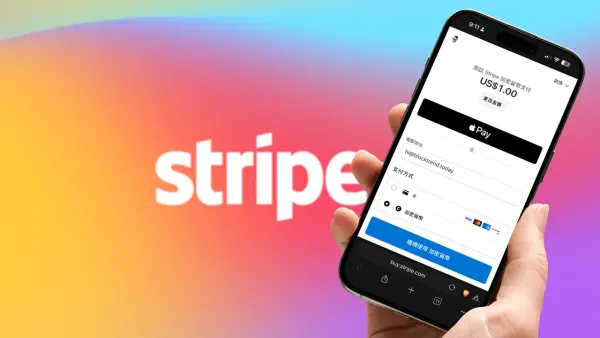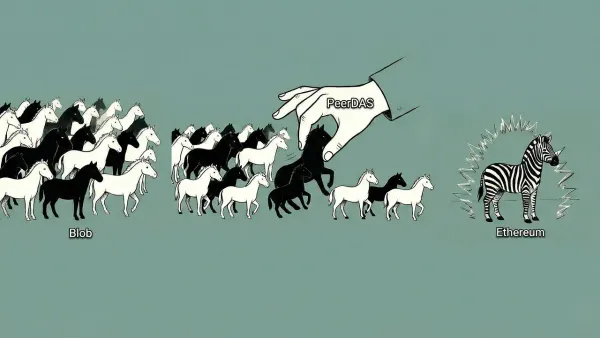CRO Century Scam: Users Reduced to "Lemmings" and the Fake Democracy of Token Governance
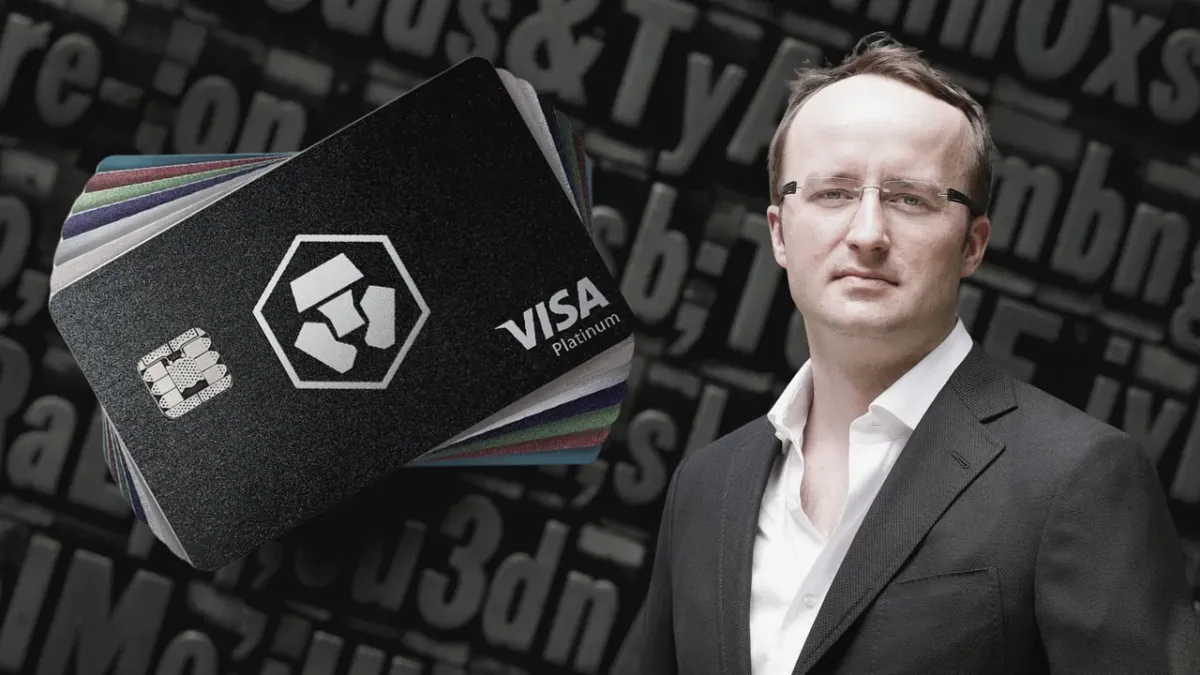
GM,
Let’s start with some good news. Geodework, a regional organization spun off from the Ethereum Foundation, recently released a report titled "Ethereum Ecosystem Overview: Taiwan Edition." The report highlights a carefully curated list of Taiwanese builders in the Ethereum space. Blocktrend is honored to be included as a representative content creator.
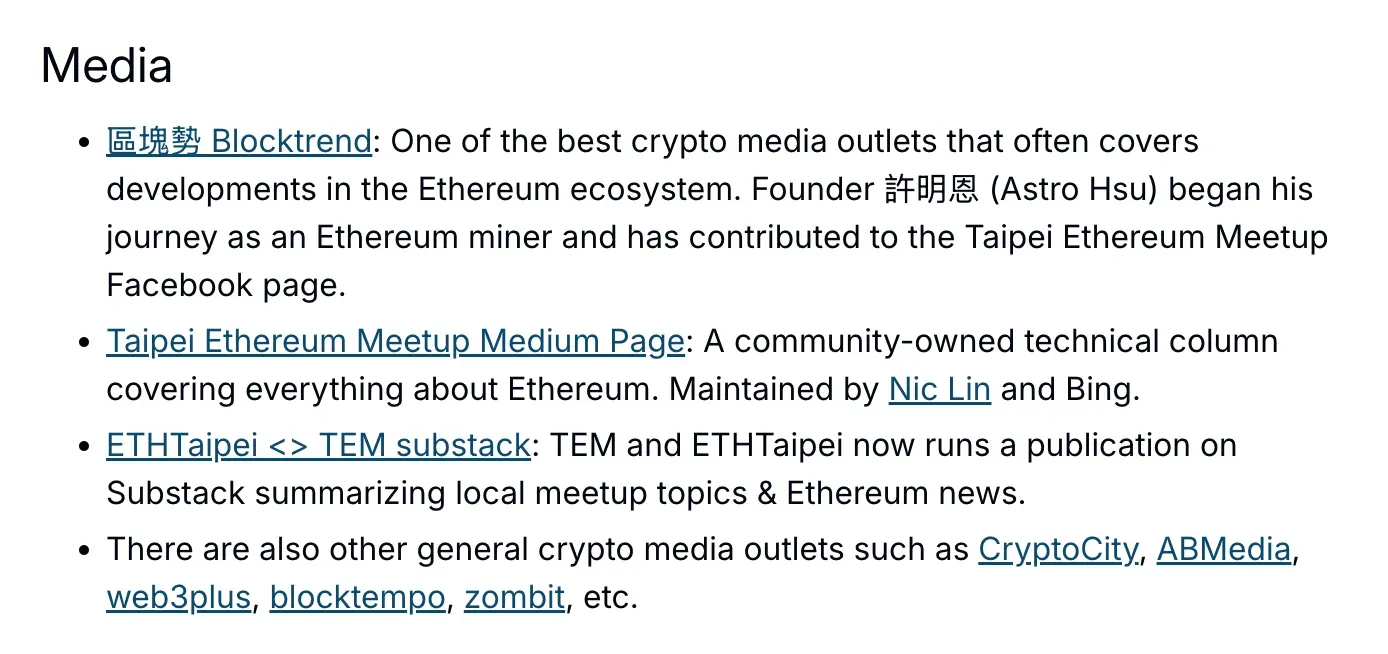
Most media rankings focus on online popularity, but Geodework evaluates candidates based on whether their contributions are recognized by the internal Ethereum community. That’s why you won't see "shill influencers" on the list. As Vitalik Buterin has pointed out, this internal recognition—legitimacy—is the scarcest resource in any community. A big thanks to all Blocktrend subscribers for your support! Your subscriptions enable us to continue creating valuable content for the industry. Now, let’s dive into today’s topic.
This week, I decided to remove Crypto.com’s Visa card referral link from the Blocktrend website. The reason? Cronos, the blockchain led by Crypto.com, recently passed a highly controversial governance proposal through sheer voting power. The proposal reversed the burn of 70 billion CRO tokens from 2021, effectively increasing the total token supply from 30 billion to 100 billion CRO. Even worse, the entire 70 billion newly minted CRO goes directly into Crypto.com’s pockets—a blatant case of institutionalized theft that has turned CRO into one of the biggest scams in crypto history. This article will explain how Crypto.com, once a source of pride for the crypto industry, has fallen from grace.
The Village’s Last Hope
Founded in 2016, Crypto.com has amassed over 100 million users worldwide. Its most famous product is the Crypto.com Visa Card, which allows users to store crypto and spend it like cash. However, the card doesn’t facilitate direct crypto payments. Instead, users must first convert their crypto into Singapore Dollars (SGD) before loading it onto the card. Taiwanese users face two layers of currency conversion losses when using the card locally.
For a time, Crypto.com was hailed as "the village’s last hope." CEO Kris Marszalek, a Polish entrepreneur, launched the idea in 2017 under the name Monaco, aiming to integrate crypto into everyday spending. Back then, cryptocurrencies were like loyalty points—they could be exchanged for real money on exchanges but were difficult to use for daily purchases. Monaco filled this gap and made headlines by acquiring the coveted "crypto.com" domain name, instantly catapulting itself into the spotlight.
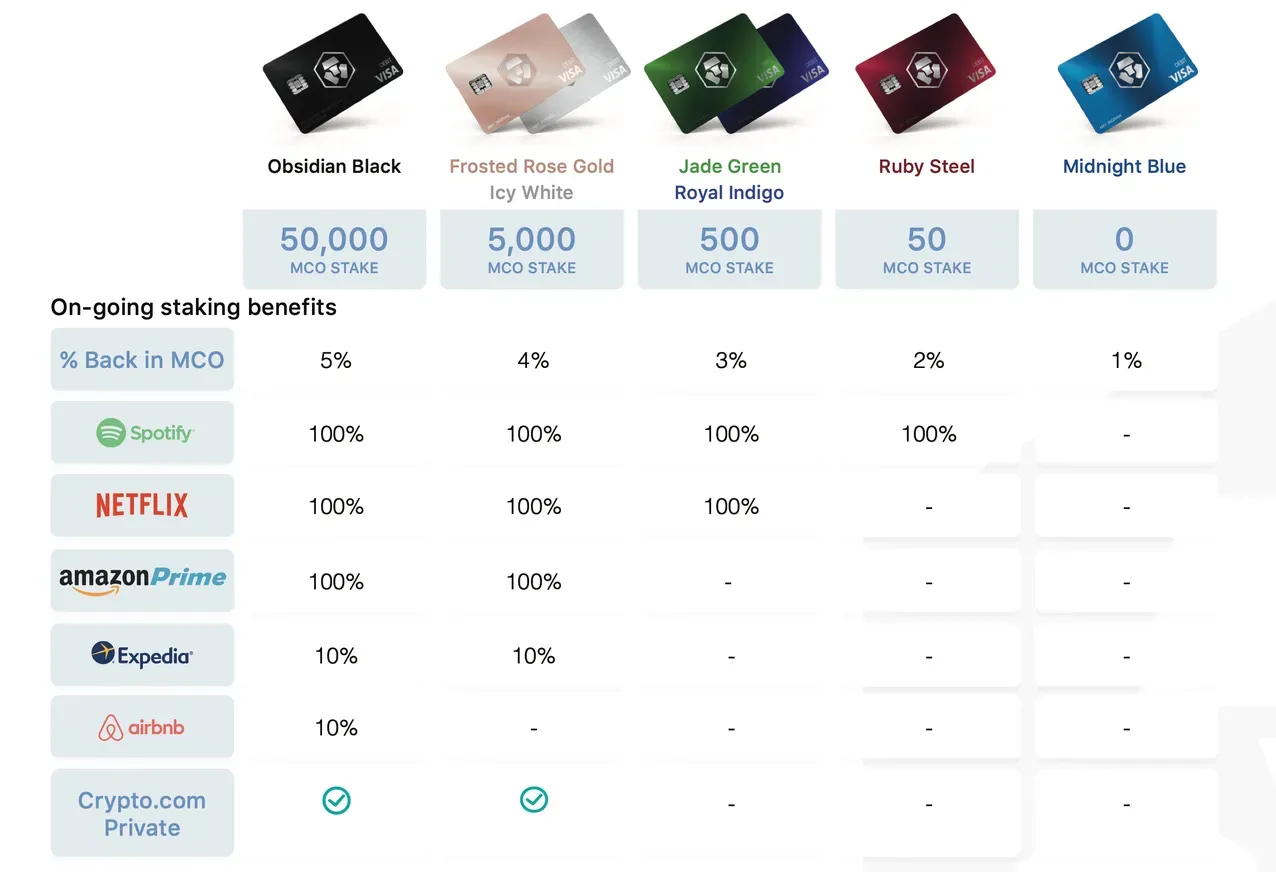
Crypto.com has always had a keen sense of consumer preferences. It wasn’t just the metal card design that created a sense of exclusivity; the platform also introduced highly attractive reward programs. Many users were drawn in by the full crypto cashback on Spotify and Netflix subscriptions, while premium cardholders enjoyed complimentary access to airport lounges. The highest-tier cards even offered up to 8% unlimited crypto cashback on general spending. Crypto.com’s referral program was equally generous. At one point, I promoted it for free 1 and even returned my referral rewards to users who signed up with my code, encouraging more people to give it a try.
In 2021, Crypto.com became a principal member of Visa, gaining the right to issue cards directly to users. That same year, the company made headlines by spending $700 million to acquire the 20-year naming rights to the Los Angeles Lakers' home stadium, renaming the iconic Staples Center to Crypto.com Arena. It was also in 2021, at the height of its success, that Crypto.com announced the launch of its own blockchain, Cronos. As part of this initiative, the company burned 70 billion CRO tokens. According to their official statement:
We believe the world needs a fully decentralized, open-source, high-speed, and low-cost public blockchain. For crypto to achieve mass adoption through payments, DeFi, and NFTs, this foundational infrastructure is essential. With the launch of Cronos, we are taking the first step toward a decentralized network by progressively burning 70 billion CRO tokens over time.
At the time, CRO had a total supply of 100 billion tokens, meaning 70% of the supply was effectively removed from circulation. Meanwhile, CRO gained a new utility as the gas fee token for the Cronos blockchain. With scarcity driving demand, the price of CRO surged from $0.10 to nearly $1 by the end of the year—an over 10x increase in just one year.
Two weeks ago, Cronos Chain put forward a highly controversial proposal—they want to restore the 70 billion CRO tokens that were burned in 2021.
Betraying the Community’s Trust
Cronos framed the proposal with slogans like "Ushering in a Golden Era for Cronos" and "Investing in America". But even the messaging itself is contradictory—why does Cronos' so-called golden era depend on investing in America?

A Shocking Reversal
In November 2024, Cronos announced a new vision, aiming to become the leading blockchain for AI agents... At the same time, Crypto.com proposed launching a Cronos ETF backed by CRO reserves... positioning the U.S. as the global hub for crypto... To ensure Cronos develops according to its roadmap, we propose a community vote to establish a Cronos Strategic Reserve, reversing the token burn from February 2021 to support this ambitious plan.
This announcement, along with the subsequent voting results, completely shattered my long-term trust in Crypto.com. There are three key reasons:
1. Blatant Opportunism
Trump's policies prioritize America First, the U.S. has launched a crypto strategic reserve 2, and more crypto ETFs are expected to be approved. Perhaps because none of these bullish policies benefit CRO, Crypto.com decided to take matters into its own hands—reviving previously burned CRO tokens as a strategic reserve, with the goal of launching a CRO ETF.
Setting aside the question of whether an ETF would even help Cronos, the method itself is highly problematic. In crypto, burned tokens are gone forever—just like a person who has died cannot be resurrected. Yet, Crypto.com brazenly challenges this fundamental principle. If previously burned tokens can be reissued at will, what other commitments might Crypto.com go back on?
Ironically, when Cronos launched in 2021, it positioned itself as a decentralized network, claiming to be global infrastructure. Now, it is promoting "Investing in America" as its core strategy, with the goal of launching an ETF in traditional finance markets. As a Taiwanese user, I fail to see how this contributes to Cronos’ vision of becoming global infrastructure. Is Cronos’ so-called golden era just about pumping token prices?
2. Brazen Exploitation
The proposal to mint 70 billion CRO would funnel all newly created tokens into the Cronos Strategic Reserve, which is effectively controlled by Crypto.com. In essence, this is nothing short of legalized theft. While the proposal claims that these tokens will be strictly regulated and subject to a five-year linear unlocking schedule, the reality is that Crypto.com controls the denominator, while users control the numerator. When the denominator increases by 3.33x, no matter how many tokens users hold, they can’t outpace the rate of devaluation.
In traditional finance, when companies issue new shares, they safeguard existing shareholders’ interests, provide clear explanations of fund utilization, and outline expected returns. In contrast, the Cronos Strategic Reserve offers only a vague promise: “We will use the funds prudently.” No one knows where this money will actually go. Crypto.com claims to be compliant with regulations while blatantly exploiting token economics to drain value from its users. They take everyone for fools, and even the community vote was a sham.
3. The Illusion of Token Governance
The decision to mint 70 billion CRO—a proposal of huge significance—was rushed to a vote without adequate public discussion. The moment the announcement was made, the 14-day voting period began its countdown.
Cronos employs a delegated democracy model, where users delegate their CRO holdings to validators (representatives) who take a cut of staking rewards. While there are 100 validators on the Cronos chain, six of the top ten are effectively controlled by Crypto.com, granting them a majority of the voting power. In other words, Crypto.com can theoretically push through any proposal at will.
For the first 13 days of voting, the approval and rejection votes were nearly tied. During this time, Crypto.com had only mobilized two of its validator nodes, creating a scenario where small fish were pitted against two whales. Many still held hope that they could block the proposal. However, on the final day of voting, Crypto.com mobilized its remaining four validator nodes, all casting votes in favor of the proposal. This completely crushed the opposition, forcing the proposal through.
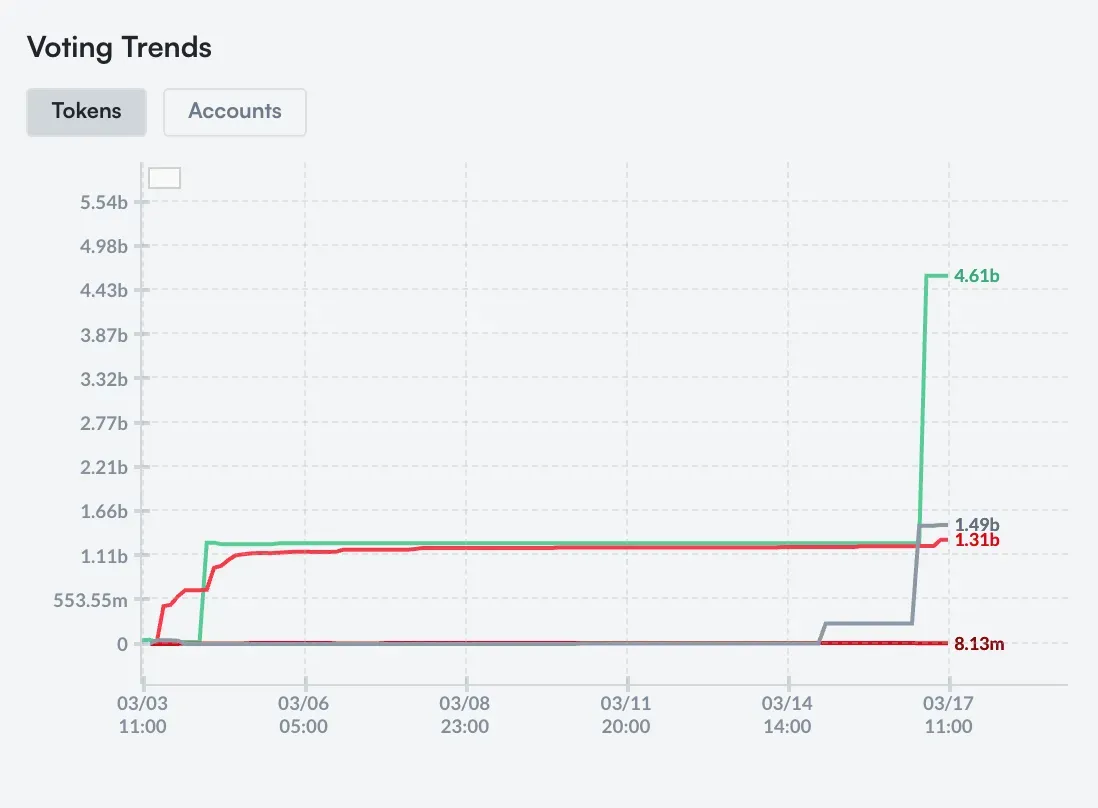
Throughout the voting process, community backlash was relentless, yet Crypto.com refused to hold an AMA (Ask Me Anything) session to address concerns. Only after the decision was finalized did they announce that CEO Kris Marszalek would host an AMA to answer community questions. At this point, I have zero expectations.
Fake Slogans, Real Fraud
No one ever truly believed that Cronos, led by Crypto.com, could achieve the same level of decentralization and censorship resistance as Bitcoin or Ethereum. However, what no one expected was that the one to expose this liewould be Crypto.com itself. Crypto.com initiated the proposal and controlled the majority of the voting power, making token governance nothing more than a fig leaf of democracy.
Surprisingly, the CRO token price did not crash following the proposal. Instead, it held steady, demonstrating Crypto.com’s ability to manipulate market stability. However, regardless of future price movements, I will never use Crypto.com’s products again. Their actions prove that they have no intention of building for the long term and are willing to sacrifice fundamental principles and community trust just to boost short-term token prices.
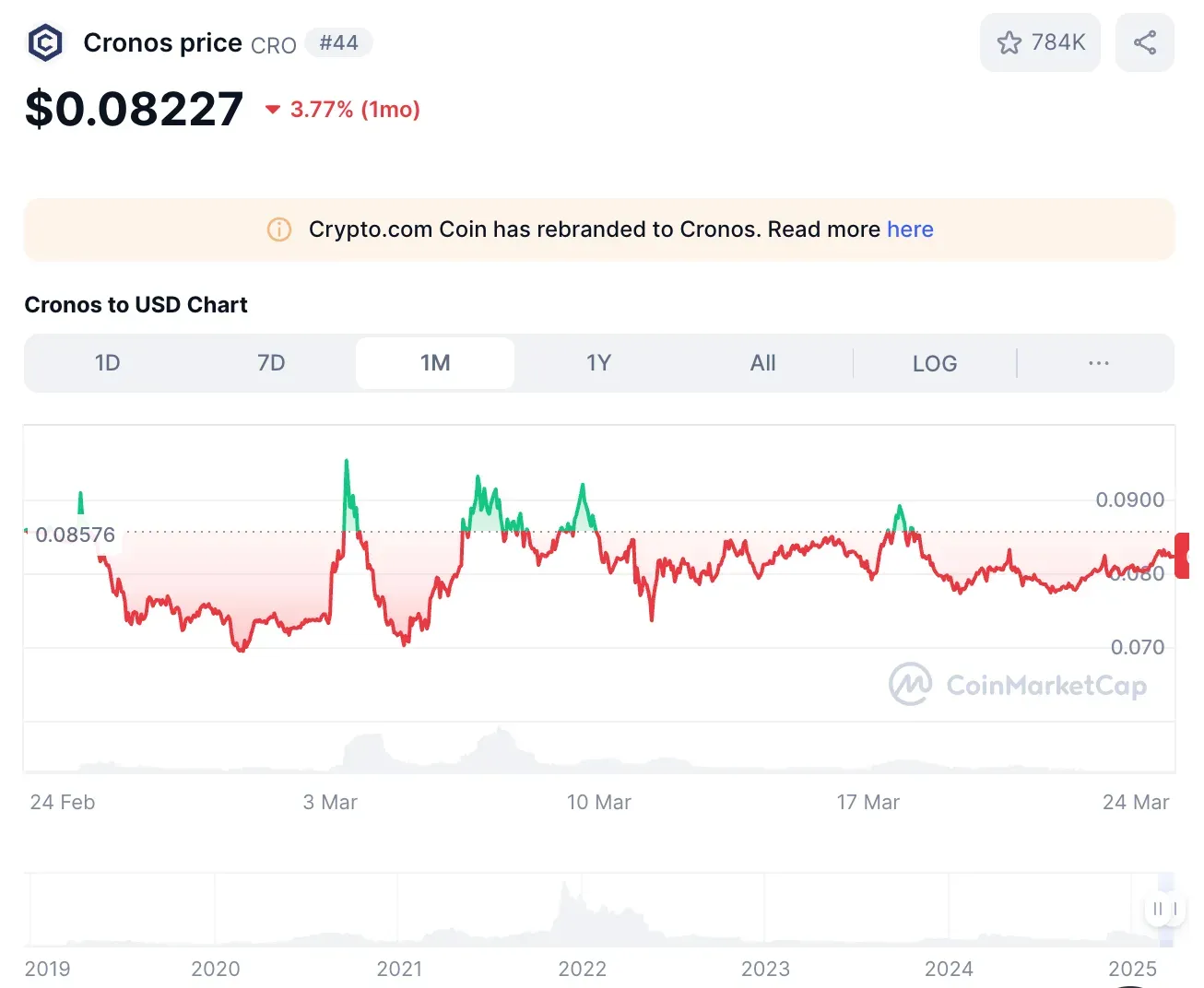
Crypto.com was once "the village's last hope." Its financial card allowed many to believe that one day, crypto could be used for everyday transactions. However, as time passed, card benefits worsened. Now, in an attempt to chase the latest trends, a single proposal has transformed Crypto.com from an industry pioneer into the protagonist of a historic scam. This reminds me of Boeing’s downfall—a company once renowned for engineering excellence but later sacrificed safety in pursuit of stock price gains.
Blocktrend has decided to remove Crypto.com promotions from its platform—not just to uphold the integrity of our past content but also to remind everyone to safeguard their assets.
The annual Ethereum developers' conference in Taiwan, ETHTaipi, is set to take place on April 1 (Tuesday) and April 2 (Wednesday) at Bottle Cap Factory in Nangang, Taipei. Beyond technical discussions, attendees will have the unique opportunity to share a banquet and play Bwa Bwei (a traditional Taiwanese divination ritual) with Vitalik Buterin. Use Blocktrend's discount code【BLOCKTREND】 at checkout to enjoy a 50% discount. Only 20 tickets are available at this special rate—don’t miss out!
2. Taiwan’s Own $600 Million! The U.S. Establishes a Bitcoin Strategic Reserve



